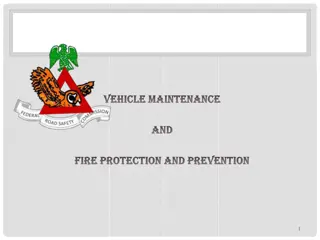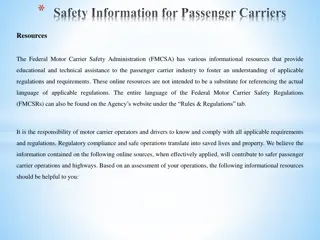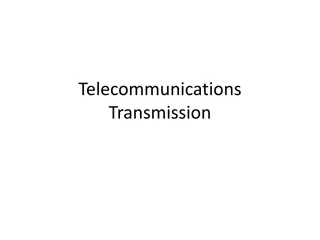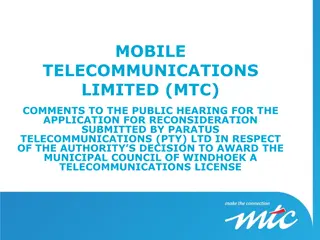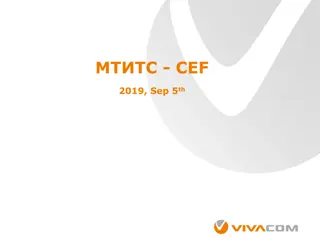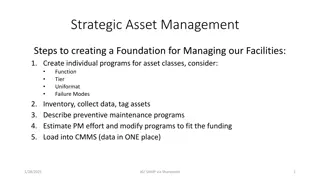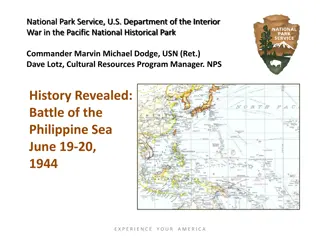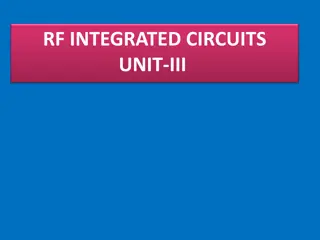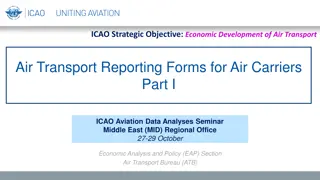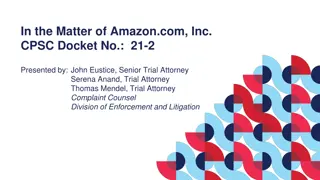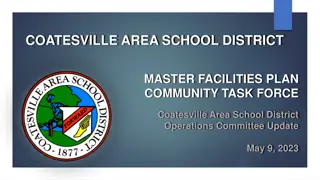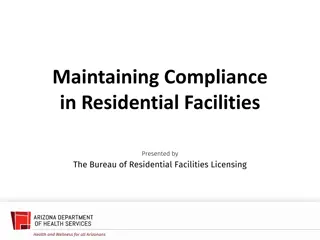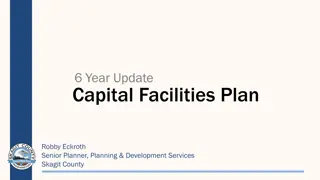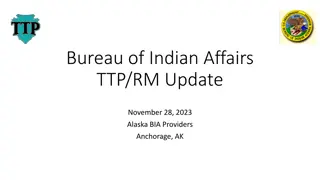Regulations on Functions of Carriers for Telecommunications Facilities Maintenance
These regulations prescribe the functions of carriers related to the installation and maintenance of telecommunications facilities, outlining procedures for consultations between carriers and landowners, and extending rights to carriers for various telecommunications facilities. Carriers with technology and service neutral licenses can enter agreements with landowners for access. The regulations also detail methods of serving correspondences and require carriers to submit written notices to landowners before accessing land for inspection or installation purposes.
Download Presentation

Please find below an Image/Link to download the presentation.
The content on the website is provided AS IS for your information and personal use only. It may not be sold, licensed, or shared on other websites without obtaining consent from the author. Download presentation by click this link. If you encounter any issues during the download, it is possible that the publisher has removed the file from their server.
E N D
Presentation Transcript
Public Hearing 12 November 2020
REGULATIONS PRESCRIBING THE FUNCTIONS OF CARRIERS IN RESPECT OF INSTALLATION AND MAINTANANCE OF TELECOMMUNICATIONS FACILITIES By Mrs. Emilia Nghikembua Head: Legal Advice
Objects of the Regulations Prescribe the functions of Carriers in installing and maintaining telecommunications facilities; Set out the procedure to be followed and consultations to be held between a Carrier and the Land Owner; and Make the rights granted to the carriers by Part 5 of Chapter V of the Act applicable to other telecommunications facilities (Section 59(4) antennas or other equipment used in connection with the transmission or receipt of radio waves )
Application of Regulations To Carriers (Section 59(1) holders of technology and service neutral licences) Carriers and Land Owners may enter into agreements governing carrier access to land for purpose of installation and maintenance of telecommunications facilities. 4
Service of Correspondences Delivering a copy personally; Leaving a copy of the correspondence at the place of residence or place of business; Delivering or leaving a copy at the domicilium citandi so chosen; Delivering a copy to any agent duly authorised in writing to accept service; Handing a copy to a responsible employee; Affixing a copy of the correspondence to the main gate or door of such office or place of business.
Notice by Carriers to access land A Carrier must submit to the land owner a written notice (Form A) to access the land for purposes of Inspection of land to determine whether it is suitable for its purpose; Installation of telecommunications facilities; or Maintenance (includes alterations, removal, repair or replacement thereof). of telecommunications facilities
Content of the Notice by Carrier to Land Owner The Notice must Set out reasons by the Carrier for accessing the land; Outline the actions the Carrier intends to take as part of accessing the land; Specify the duration of the activities; Propose a start date for accessing the land which must be at least 14 days from date of receipt of the notice by the land owner; and Copy of the Notice should be delivered to the Authority for noting purposes.
Objection by Land Owner Land owner may give a written objection to the notice from Carrier (Form B) Objection should be delivered to the Carrier 7 days before the proposed start date; Objection must- Include grounds for the objection; Indicate a date the parties must meet for consultation in terms of Regulation 8(2); Copy of the Objection should be delivered to the Authority for noting purposes.
Objection by Land Owner cont. Grounds for objection include: The location of the telecommunications facility proposed by the carrier; The duration of the activities; The date for accessing the land and start of activities; Consideration of health, safety & security; The likely effect that the proposed activity may have on the land such as: Servitude; Ongoing work or work about to commence; Environmental degradation. NB!! If no objection is received from the land owner within nine (9) days from date of receipt of the notice, the carrier may proceed to access the land as per these Regulations.
Consultation between Carriers and Land Owners Upon objection by Land Owner, parties have 14 days to consult and to try and resolve the objection. The land owner must make reasonable effort to start the consultation within seven (7) days from date of delivery of objection to Carrier. Consultation to resolve objection should be done in good faith. If the land owner and carrier cannot resolve the objection by agreement during the consultation period, either party by agreement must: Prepare the outcome of the consultation on (Form C ). Refer the dispute to the Authority for adjudication.
Emergency access to land A carrier may access the land without notice for purpose of performing the activities that need to be carried out without delay to protect: The health, safety or security of persons; The environment; The property of the carrier; The telecommunications facility or to deal with emergency repairs.
Summary of comments The regulations should not conflate occupier and land owner. Regulation 1 defines landowner as derived from the context of Part V as follows: "land owner means a person who owns or legally occupies a land, and includes the State, a local authority and a public body. An occupier is not the owner of land but in the circumstances of a notice in terms of subsection 2, it is proper to issue notice to the occupier.
Summary of comments Distinguish between sharing of infrastructure and access of land for purposes of installing equipment. Infrastructure sharing (section 50): makes provision for the utility to refuse lease of infrastructure referred to under certain defined circumstances (section 50(7)) Carrier regulations (Part 5) apply to rights of way to implement new facilities by carriers (entities holding a service technology neutral telecommunications service licence) and the duties of those carriers.
Summary of comments Section 60 does not require or provide for written notice in terms of regulation 6 The rights conferred to carriers by Part V is exercised subject to S68 which obliges carriers to perform their functions in terms of Part V in accordance with the regulations made under subsection (2). Regulation 7 seeks to introduce some form of objection procedure, not contemplated in the Act Objection is a proceduralmatter in any process or procedure involving the affected rights of any person. The objection provided in regulation 7 is not an unrestricted objection but regulated and guided by grounds.
Summary of comments In terms of regulation 8(4), if the land owner (as defined in the proposed regulations) and the carrier cannot resolve the objection by agreement, then the dispute must be referred to the Authority for adjudication. Adjudication refers to disputes regarding the exercise of rights under Part V. The only forum available to parties in terms of section 69(1) is the Authority. The Regulations in their entirety are ultra vires the Act Section 68 (2) enables the Authority to choose what procedural matters should be included in the procedure to be followed and consultations to be held between carriers and any affected person or public body. Whatever rights conferred to carrier by Part V such right is subject to the procedure laid down by the Authority in terms of section 68(2).
Summary of Comments The Regulations in their entirety are ultra vires the Act. Section 68 (2) enables the Authority to choose what procedural matters should be included in the procedure to be followed and consultations to be held between carriers and any affected person or public body. Whatever rights conferred to carrier by Part V such right is subject to the procedure laid down by the Authority in terms of section 68(2).




